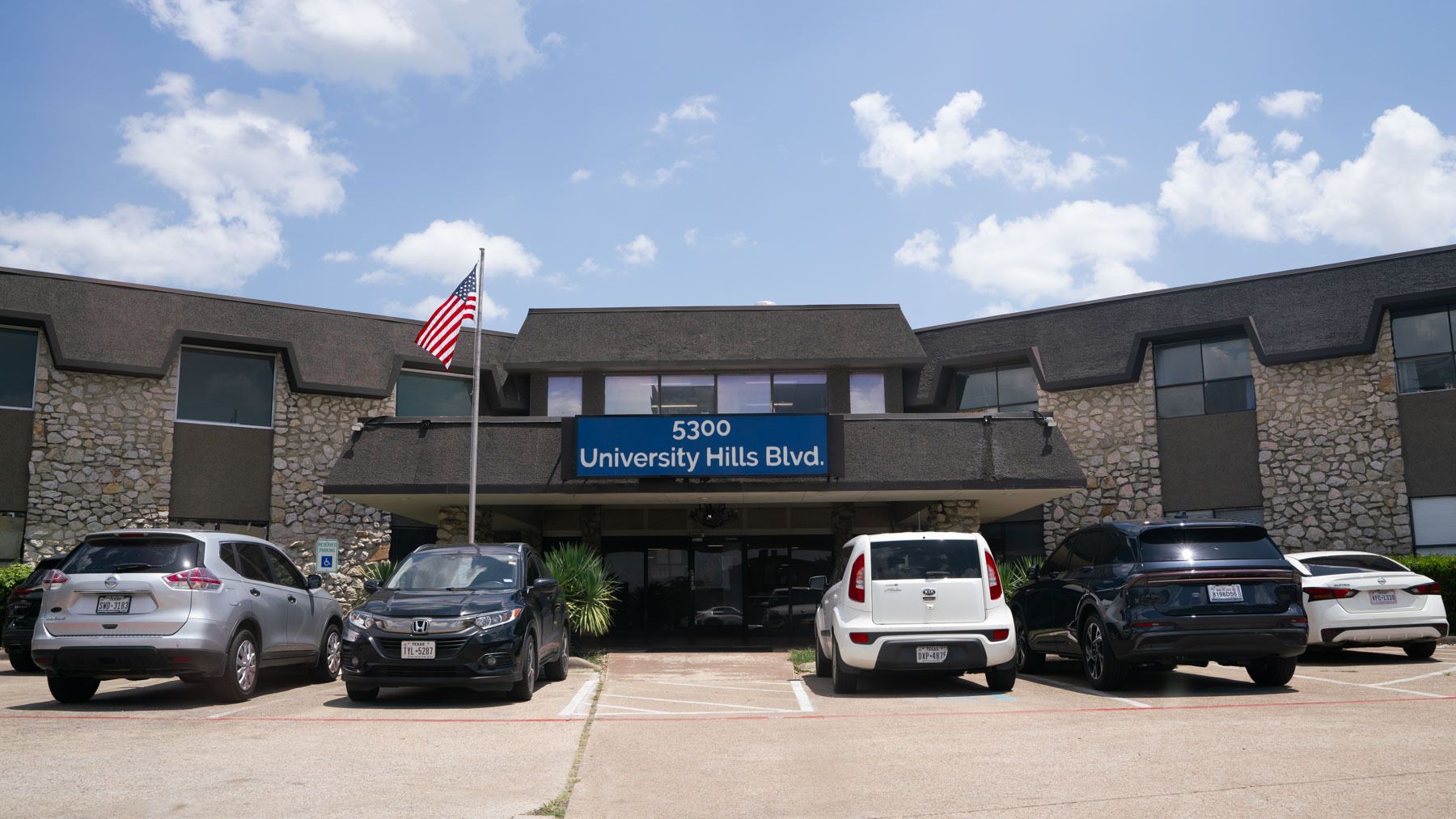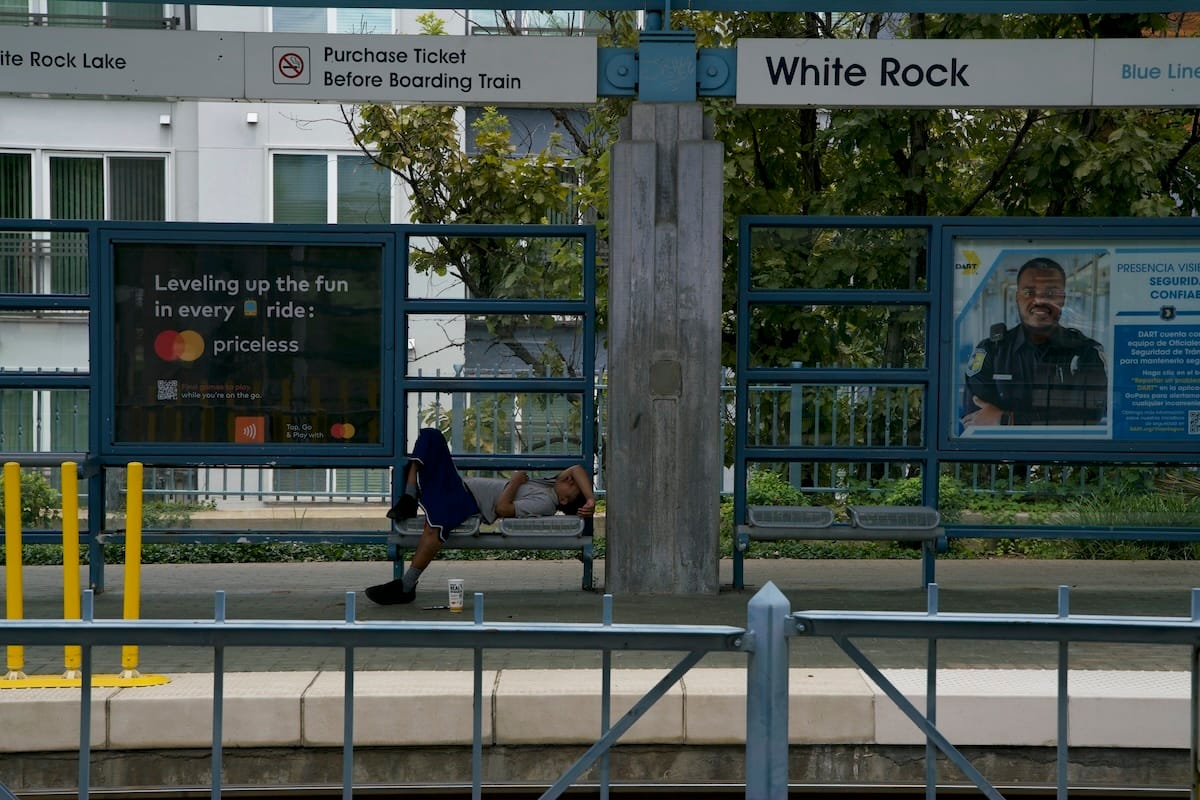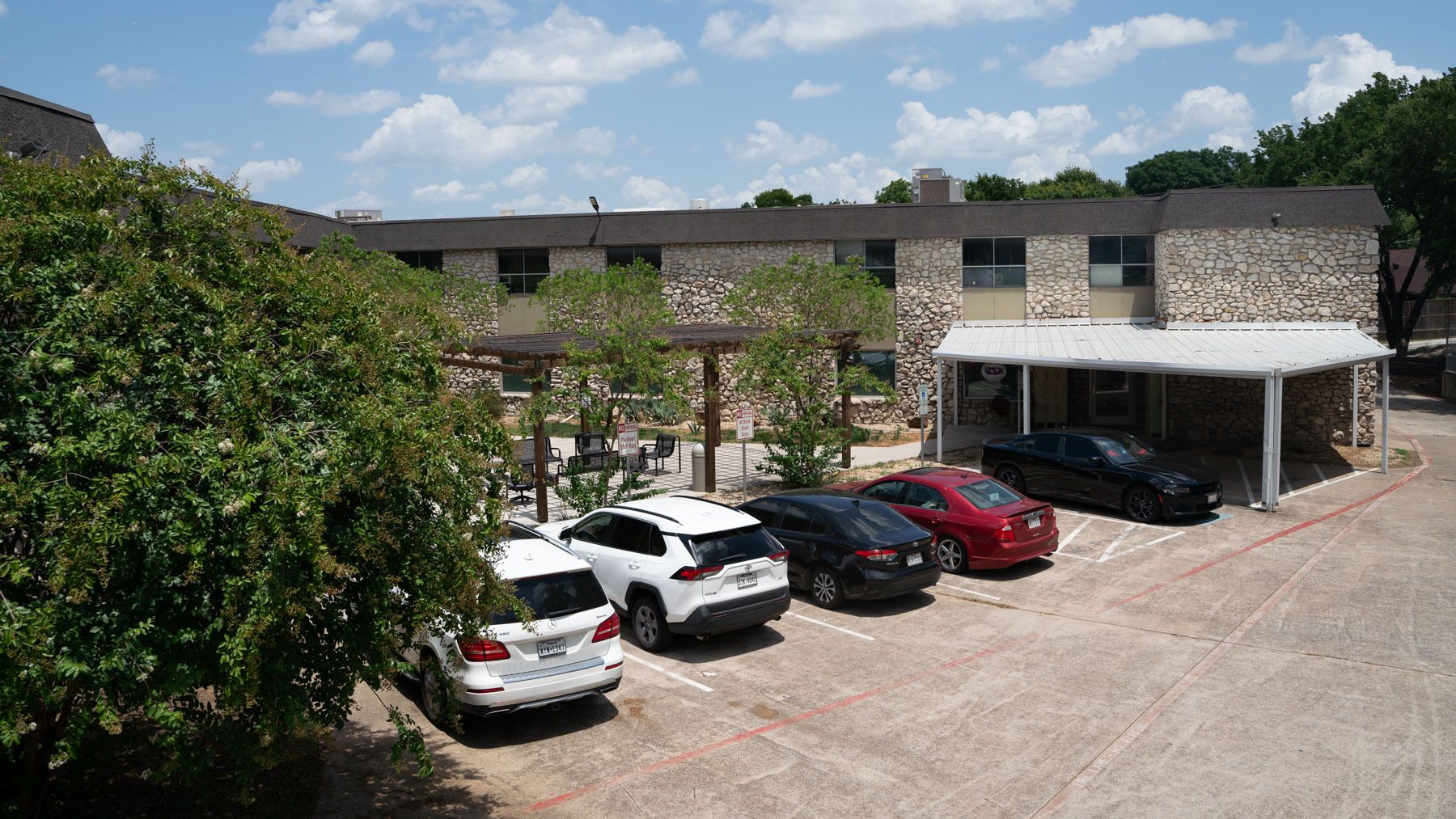- The Lab Report Dallas
- Posts
- If Not Jail, Then Where?
If Not Jail, Then Where?
The district attorney believes too many people are being taken to jail who need help more than punishment. Doing something about it is a different story.

The Frank Crowley Courts Building, where District Attorney John Creuzot would like to avoid sending defendants for criminal trespass if he can help it. (Photo by Jason Janik)
After being elected Dallas County’s district attorney in 2018, John Creuzot began trying to encourage police to stop arresting so many people.
He directed his prosecutors to no longer accept cases for low-level, first-time marijuana possession and criminal trespass, so long as the incident didn’t involve a residence or “physical intrusion.” He shortened probation terms and adjusted bail recommendations. He introduced these changes as “a step forward in ending mass incarceration,” reflecting his belief that prisoners jailed for nonviolent misdemeanors more often benefit from help than punishment.
Creuzot’s reforms, particularly those involving which cases prosecutors did and did not accept, were covered widely by journalists and derided by Republican state officials. But the district attorney also launched initiatives that didn’t hoover headlines with the vigor of those prosecutorial edicts. One, known as “Dallas Deflects,” sounds like a sensible, easy solution but it has proven to be almost impossible to match Creuzot’s vision for the program.
Dallas Deflects is the county’s deflection center, 16 beds in a behavioral health clinic operated by nonprofit Homeward Bound near the city’s southern border, off Ledbetter Drive. It was created so police could park nonviolent criminal trespass offenders in a place they could access support services instead of booking them into jail. Three years after its launch, the program’s beds are often occupied, but jail data show officers haven’t stopped arresting.
“These people are in the jail over and over,” Creuzot says. “If you can break the cycle, all the repeat trips to jail would be broken.”
The deflection center does not appear to be breaking this cycle as the district attorney intended. Not yet, at least. Its most significant obstacle may be its status as a voluntary program, meaning police have to gain consent before they can take the person to the center. Deputy Chief Majusta Allen says it’s difficult to persuade defendants, who are often mentally ill or under the influence of drugs or alcohol, to choose the nonprofit facility over jail.
“Most of them refuse these services,” says Allen, who oversees patrol units in the south. “It’s a challenge for us to try to sell the program to these individuals.”
Allen says officers have been trained to market the program to eligible defendants. They even have pamphlets in their cruisers. It operates 24 hours a day, seven days a week. Parkland clinicians perform medical checks, the North Texas Behavioral Health Authority delivers mental health screenings, and clients have access to Homeward Bound’s full suite of services, from detox to longer-term psychiatric and residential substance use treatment.
The concept is simple: The individual gets connected with behavioral health services, their criminal charge vanishes without having to see bars or a judge, and officers get back to work quickly. Police spend an average of four hours booking a person into jail; they’re in and out of the deflection center in 15 minutes. When devising this strategy, Creuzot believed it was critical that the center be specifically designed for people taken into custody for criminal trespass, meaning they’re already in the back of a squad car. Behavioral health beds for the broader public are important, but achieving his goal of reducing the jail population meant targeting individuals who would otherwise be booked, arraigned, and incarcerated.
The simple conceit has proven more complex in practice. The program’s success requires buy-in from the police officers who make the arrests, investment from the nonprofit operator that provides clinical staff and space, and sustained interest among the patchwork of public and private funders that keep lights on in the shelters, clinics, and detox centers across the region.
The DA’s office has identified 3,348 arrests since 2023 it believes could have been diverted through the deflection center. There is a financial reason to do this work, too. The office found that a single criminal trespass case costs the county about $1,400 to process. In 2022, county research showed it spent $2.5 million jailing people for criminal trespass and adjudicating their cases.
Considering police aren’t filling all the beds each month, the deflection center has instead become 16 more for whoever needs them, regardless of whether the person was shuttled by a police officer. Creuzot could declare war on criminal trespass charges, but the theater is outside of the courthouse, beyond his jurisdiction.

The front entrance to Homeward Bound’s southern campus, a renovated nursing home that opened as a behavioral health center in 2018. (Photo by Sebastian Gonzalez)
Dallas Deflects’ beds are housed across five rooms in a wing of a former nursing home that takes less than one minute to walk from entrance to exit. Bright LED bulbs assault the hallway to which their doors open, but the rooms on a recent rainy Monday were so dim I could only make out the shapes of the men laying on mattresses.
Doug Denton, Homeward Bound’s director, had just finished giving County Commissioner Theresa Daniel and her staff a tour of the South Oak Cliff facility. She was impressed. “This shows what can be accomplished,” she tells me after her visit, “when we work as a team.”
That team appears to be missing a crucial rotational player. Three years into its operation, Dallas Area Rapid Transit police are the most consistent law enforcement partners for the deflection center. (They’ve averaged about 14 would-be defendants a month in 2025. They’ve also arrested 292 people so far this year for a solitary criminal trespass charge, according to the district attorney’s office, which is on pace to sail past the roughly 400 single arrests they processed into jail last year.)
“These people are in the jail over and over. If you can break the cycle, all the repeat trips to jail would be broken.”
The officers play the most difficult role. Criminal trespass is a lower-level priority, which means it gets bumped in the queue for violent crimes such as assaults and robberies. The deflection initiative also launched with a clumsy announcement rollout to the rank-and-file, which confused other departments as to whether only Dallas PD was allowed to use the center.
Former Police Chief Eddie García appeared in a video distributed to officers across the county, asking them to use it. (Among the cited pros: “Good feelings” for connecting this population with services, plus free popcorn.) And, again, they must have permission from the individual before they take them to Homeward Bound.
Current and former patrol cops, none of whom had authority to speak on the record about the program, gave a variety of reasons for why they aren’t using it. One said the option is, at best, an afterthought for patrol. Another responded to the question with one of his own: “What’s the deflection center?” Several officers noted that offenders would rather go to jail because they get a meal, a place to nap, and no one trying to sober them up. Others noted the southern Dallas location is too far from many divisions, especially when traffic is bad. If officers are coming from north of the Trinity River, they’re driving past the jail to get to the facility. Although the processing time at the deflection center is streamlined, a number of officers continue to believe it’s more complicated than the jail system and not worth the drive.
“It's just a sense of ‘I know how to arrest someone at the jail; I don't know how to do it at the deflection center,’” one officer says. “Nobody promotes it and nobody really remembers it.”
In May of this year, for instance, city police departments across the county—not including DART—accounted for just 12 of the 101 individuals admitted into the deflection center. June was better, considering municipal cops dropped off 25 of the 114 total. (Dallas PD accounted for 20 of those.)
Still, Dallas Deflects has nearly doubled its total intake this year. If officers aren’t filling the beds, why has business been good lately? The deflection operation was initially funded, in part, by a nearly $1 million federal grant administered through the district attorney’s office that required the center be available to police departments. That grant has expired, and Denton notes that the beds are still awaiting cops who bring in eligible clients. But Homeward Bound has since expanded Creuzot’s explicit goal to “reduce the number of individuals processed into the Dallas County jail for criminal trespass.”
The center required years of negotiations to secure funding. Parkland spends about $1 million annually on medical services and the North Texas Behavioral Health Authority chips in another $1.4 million for mental healthcare. Dallas County Commissioners added a flat $1.2 million to renovate the wing at Homeward Bound to accommodate the center. The rest came from another half-dozen public and private funders, which included Creuzot, the Dallas County Catholic Diocese, AT&T, and Mark Cuban.
All of which explains why commissioners saw the low headcount each month and questioned the nonprofit’s leadership about why the program wasn’t filling its beds. In response, Denton became proactive. In May 2024, Homeward Bound launched its own “rapid response” program, funded by a philanthropic foundation affiliated with a chain of convenience stores that has, so far, refused to identify itself. (Denton will only say that foundation is affiliated with a “convenience store system.”)

Three years into Dallas Deflects, DART police are the most consistent law enforcement agency using it. (Photo by Sebastian Gonzalez)
In the 2024 fiscal year, the center received and processed 476 people, according to its data, which averages out to 39 a month. In the 10 months of the current 2025 fiscal year, from September 2024 to June 2025, the center had already increased its total to 721 and is on track to crest 1,000 by the year’s end.
Since the beginning of 2025, about two-thirds of each month’s deflection roster has been made up of individuals picked up from parking lots belonging to this chain as well as walk-ins and referrals from the county’s behavioral health authority, all of which were not how the district attorney envisioned the deflection center working.
Denton often attends a business association meeting for property owners near Homeward Bound’s campus, where he heard complaints that “police officers don’t respond to our calls” when they report a person refusing to leave their private property. “I made the mistake of raising my hand and saying, ‘We work with the Dallas Police Department,’” Denton says. “They came up after the meeting and said, ‘you know, we need some help, and my company has a foundation.’”
This foundation in 2024 approved giving $1.6 million for Homeward Bound to create a team to respond to the chain’s complaints. When a store manager calls, Homeward Bound dispatches trained and unarmed mental health professionals who offer the person a trip to the most appropriate location, be that Parkland Hospital, the deflection center, or a family member’s home. The managers self-report whether they would’ve called 911 on the individual without the new service. Denton says they’re averaging between 75 to 98 “diversions from a police call each month.”
“If the police had shown up and made an apprehension, it probably would have been filed as a criminal trespass,” he says. The convenience store chain seems happy with its results; Denton says he is confident the foundation will renew its gift for a second year in 2025.
Similar to Creuzot, Denton can do little to persuade officers to use the deflection center. The decision to not rely solely on police to fill its beds appears to have satisfied policymakers like County Commissioner John Wiley Price, who, along with Daniels, pays close attention to how mental health services are provided throughout the county. Particularly in the deflection center’s pocket of southern Dallas.
“I’m ecstatic about this,” Price said in May during a monthly meeting of the North Texas Behavioral Health Leadership Team, after Denton briefed the group. “They have been embraced by the community.”
But that isn’t how Creuzot imagined this going: “Though it is serving a portion of the mental health population, it’s not serving the most expensive and frustrating portion of it, because these people come back over and over,” Creuzot says. “It doesn’t fit the vision. It doesn’t fit the mission of what we intended to do.”
The idea of the deflection center was prescient. In 2023, the Texas Legislature rendered moot many of Creuzot’s early reforms. The governor signed a bill allowing district attorneys to be removed from office by the courts should they refuse to prosecute crimes. But that legislation does not stop police from taking a person in custody elsewhere.
Meanwhile, the county is currently battling an overcrowding problem at the jail system, which is made up of four detention centers collectively known as the Lew Sterrett Justice Center. This has oscillated around 96 to 97 percent of its roughly 7,100-person occupancy for much of the last year. The county commissioners court, effectively the jail’s governing body, is desperately searching for solutions before it has to pay to bus prisoners to jails elsewhere. Misdemeanor arrests for things such as criminal trespass are easy targets.
Of course, 16 beds alone would not solve the problem of an overcrowded jail, even if it was operating as intended. “I don’t think it’ll put it in a safe zone,” Creuzot says of the deflection center’s impact on the jail population, “but I think it’ll keep it out of a crisis zone.” There are many issues causing Lew Sterrett to teeter at its capacity: judicial docket backlogs, the disastrous implementation of new software, and, according to a recent lawsuit, the pace with which the county processes releases once they’re ordered by a judge.
While the people most likely to be occupying a bed at Homeward Bound almost certainly need mental health services, Creuzot questions whether they committed a crime prior to their transport to the nonprofit. The importance of the deflection center was to intervene before the person is in the system. “People in jail aren’t really getting any services,” Creuzot says. “Because of the lack of beds, it was highly likely we were going to dismiss the case before they would get any treatment.”
County Commissioner Andrew Sommerman shares this concern. He was among the county officials who recently traveled to Miami to examine a program that has diverted tens of thousands of people away from jail over the last 25 years. The Miami model, which serves all of Miami-Dade County, was launched in 2000 to get people with serious mental health conditions away from the jail and toward support services.

The deflection center’s 16 beds are on the southwest side of Homeward Bound’s southern campus. Officers can pull right into the parking lot to drop off clients. (Photo by Sebastian Gonzalez)
Officers from each of that county’s 36 municipal police departments underwent crisis intervention training that helped them identify mental illness in the field: “Officers are trained to quickly assess situations and assist individuals in accessing a full array of crisis and noncrisis services and resources across the community,” read a 2020 report assessing the program. From 2000 to 2019, Miami reduced its annual jail bookings from 118,000 to 53,000. The county closed a jail and the work saved taxpayers $12 million each year.
Sommerman shares an anecdote of an unsheltered man undergoing a psychotic break to show how the Miami model could help here.
“He picks up a brick and he throws it through a store window. If I take him to jail, he will decompensate,” Sommerman says. “He will get worse. He will probably get a very low or no bond, he will be released, and now he’s more dangerous than when we picked him up.”
Sommerman came to three realizations. The deflection program must be no refusal, taking the onus away from cops to convince people to choose it over jail; the individual needs to be held and observed for a 23-hour period; and there must be locations across the county.
“It is intended for police to have intervened in a person’s life, and they shouldn’t be going to jail. They should be going somewhere else.”
“We need to keep supporting (Homeward Bound) … it is preventing crime in that we're trying to help homeless people and people who are mentally ill,” Sommerman says, “but it is not the no-refuse, fully functional deflection center to keep people out of our jail who are headed there.”
Miami is much farther along—a $22 million bond paid for a 181,000-square foot diversion facility with 208 beds—but its foundation is similar to Creuzot’s vision for the deflection center. Sommerman says he plans to appoint a committee to research how to open satellite locations in each of the four commissioners’ districts, and they won’t accept walk-ins. He will likely need help from the Texas Legislature, both to allow the deflection centers to hold a person, and to help pay for it.
“It is intended for police to have intervened in a person’s life, and they shouldn’t be going to jail,” Sommerman says. “They should be going somewhere else.”
Creuzot looks at this population like compounding interest. Once they’re in the system, data show they tend to come back. His office has plucked a few real-life examples to highlight, including a man I’ll call Mark. On October 1, 2023, Dallas Area Rapid Transit police arrested Mark for criminal trespassing. The district attorney declined to prosecute, and Mark walked out of Lew Sterrett five days later. On October 20, DART cops arrested him again for the same thing. This time, he spent a week in jail. He spent another five days behind bars on October 29, then a full week after a November 9 arrest. Mark would be arrested another seven times over the next year—by DART police, Dallas cops, and the county’s hospital district officers—for a total of 238 days in jail over a 16-month period.
Creuzot sees many Marks trudging through the Lew Sterrett Justice Center. Last Thursday, July 10, another six people were arrested and booked for criminal trespass. All but one had prior cases. These are the people Creuzot expected to wind up at Homeward Bound before their first arrest, and while the nonprofit is doing important work, the district attorney’s plan for a true deflection center has been thwarted by the obstacles his office alone can’t overcome.
Matt Goodman is the co-founder and editor of The Lab Report. [email protected].
We’ll send a new story to your inbox every Wednesday. Have a friend who would appreciate it? We’d love for you to forward this email to them.
The Lab Report Dallas is a local journalism project published by Child Poverty Action Lab (CPAL). Its newsroom operates with editorial independence.

© 2025 Child Poverty Action Lab. All rights reserved.
